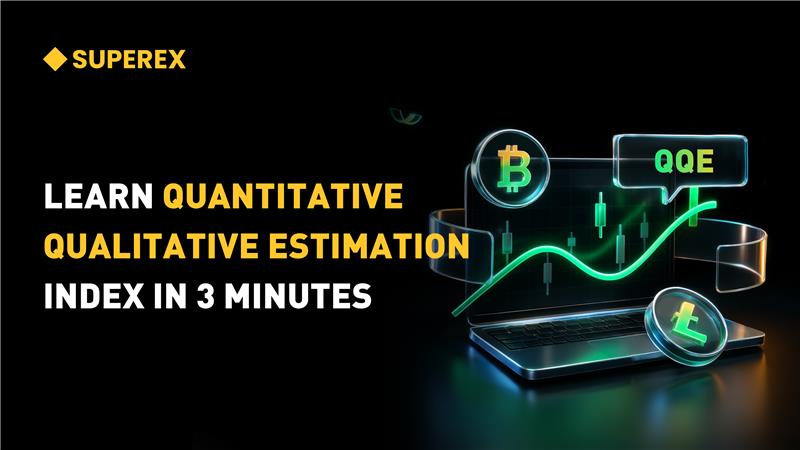New Narratives for Bitcoin Amid the Inscription Craze


According to the logic of memecoin hypes, they typically emerge toward the end of a bull market. So, why did Bitcoin inscriptions gain popularity at the beginning of this bull market? What caused inscriptions to resurge after a decline in the first half of 2023? What are the underlying reasons behind this phenomenon?
Is the inscription craze solely fueled by the hype of memecoins?
Inscriptions are essentially memecoins, lacking practical application. In the first half of 2023, when Bitcoin inscriptions were being hyped, many believed the craze wouldn't last long. It was considered a fleeting trend, similar to the animal coins that appeared on Ethereum in previous bull markets. However, why did inscriptions resurface after a period of decline in the first half of the year? What are the rooted reasons for this?
Before answering these questions, let's consider a phenomenon: despite the comparable performance of many public chains, Ethereum developers continue to dominate the community. The reasons may vary from different perspectives, but the most fundamental one lies in Ethereum's stronger consensus, enhancing its underlying security. Consensus and value are significantly correlated in the blockchain industry – understanding this might make the reason more comprehensible. Compared to Ethereum, Bitcoin possesses more robust consensus and security. This raises the question: Why did inscriptions gain traction in this bull market?
First, the popularity of inscriptions is not accidental. There have always been individuals hoping to develop application ecosystems on the Bitcoin blockchain, and they never disappear. The year 2017 witnessed the emergence of public chains. To scale for competition, Bitcoin underwent a fork within the community. The result indicated that adopting the approach of larger blocks was not viable for Bitcoin.
Second, there is technical support for applications on Bitcoin. With the Taproot upgrade, Bitcoin experienced an extensive scaling process (compared to previous efforts), attracting a massive influx of developers.
Finally, developing on Bitcoin offers greater potential value. With the approval of Bitcoin ETFs, Bitcoin applications are poised to reach a broader market. Additionally, mature DeFi applications on Ethereum make it challenging for new developments to compete, and more complex applications require longer time to break through. Therefore, migrating applications from Ethereum to Bitcoin presents a greater opportunity. For example, Unisats, whose name seems to pay tribute to Uniswap, inherits Uniswap's main mechanism in its design principles.
Behind the inscription craze are enthusiastic Bitcoin developers
In late 2022, Casey Rodarmor, a core contributor to Bitcoin, created the Ordinals protocol. On March 8, 2023, an anonymous developer known as @domodata introduced BRC-20 based on Ordinals, pushing the memecoin frenzy within the Bitcoin ecosystem into high gear. Following the release of Ordinals, another anonymous developer launched the Atomicals Protocol in September. Less than a week later, on September 26, Casey created Runes, a Bitcoin-based fungible token protocol. Additionally, since the launch of BRC-20, community developer Beny launched tools such as the BRC-20 proxy tool LooksOrdinal (non-tokenized), the OrdFi-oriented BRC-20 improved version Tap Protocol, and an enhanced version of Runes known as Pipe. Overall, these protocols demonstrate innovation, highlighting the tremendous enthusiasm within the Bitcoin developer community.
Infrastructure such as Bitcoin sidechains or Layer 2 include Stacks, BEVM, Mintlayer, Spiral, Liquid Network, Fedi, Rootstock, Interlay, Babylon, Botanix, Bison Labs, Alpen Labs, and Ark. Notable DeFi insfrastructure on Bitcoin encompass Unisats (claiming to be built on BRC-20, BRC 20-swap providing liquidity and trading), Bisq Network, and Atomic Finance. Cross-chain assets on Bitcoin include WBTC, centrally managed by BitGo; tBTC, issued by Threshold; renBTC, issued by Ren Protocol; and sBTC, issued by Synthetix.
As Bitcoin enters traditional markets, its ecosystem user base far surpasses that of Ethereum. With the Taproot upgrade and the introduction of Ordinals, an ecosystem development movement based on Bitcoin is unfolding vigorously. From a technical perspective, memecoins may serve as a warm-up or an eager anticipation for the advancement or adoption of Bitcoin technology. Even though Bitcoin core developer Luke intends to suppress Bitcoin inscriptions, development related to Bitcoin can still be shifted to Layer 2, which is undoubtedly becoming a new trend.
The accelerated evolution of Bitcoin technology is creating new narratives for BTC
Apart from the Taproot upgrade, there are several noteworthy aspects in BIPs (Bitcoin Improvement Proposals). Important technologies related to Bitcoin are also making rapid progress. In the fourth quarter of 2023, Bitcoin has seven major developments and proposals.
1. BitVM, a framework supporting expressive smart contracts on Bitcoin: Given the nature of Bitcoin's design, executing smart contracts directly on Bitcoin is slow and costly. BitVM operates similarly to Optimism in the Ethereum ecosystem, incorporating elements like fraud proofs and a challenge-response protocol.
2. Launch of Taproot Assets Mainnet: The Taproot Assets protocol, released on October 18, 2023, is created by feeding arbitrary data into Tapscript. It unlocks the potential for altcoins on Bitcoin to thrive on the Lightning Network. Formerly known as Taro, this protocol allows developers to issue, send, and receive Bitcoin-based assets.
3. OP_CAT proposal: Bitcoin researcher Ethan Heilman submitted a BIP to the Bitcoin-Dev mailing list, suggesting the addition of the OP_CAT opcode to Bitcoin's scripting language. This opcode empowers developers to build and evaluate Merkle trees and other hash data structures in Tapscript, the native scripting language used to enable new transaction types in the Taproot upgrade. Employing OP_CAT will eliminate previously imposed restrictions, further enhancing Bitcoin's programmability and thereby creating new opportunities for different use cases.
4. OP_TXHASH proposal draft: Bitcoin core developer Steven Roose proposed a BIP focusing on the benefits of implementing two new opcodes, OP_TXHASH and OP_CHECKTXHASHVERIFY, in Bitcoin's scripting language. OP_TXHASH will compete with two major covenant proposals, BIP-118 and BIP-119. Covenants are predetermined spending conditions imposed on Bitcoin transactions. For example, a user can create a covenant to ensure that the transaction recipient can only spend the BTC sent to their address after 200 blocks.
5. Lightning Timeout Trees: The Lightning Network is a major second layer for Bitcoin, but a key obstacle for further adoption is that users need to initiate at least one on-chain Bitcoin transaction to move their assets off-chain when using the Lightning Network. This restriction constrains the number of users who can migrate assets off-chain, particularly in cases of high on-chain transaction fees. A long-explored solution is the concept of "channel factories," allowing multiple users to join the Lightning Network in a single Bitcoin transaction. However, "Timeout Trees", proposed by John Law, may offer a solution using covenants (i.e., spending conditions on BTC transaction outputs). It introduces a coordinator, or Lightning Service Provider, or LSP, who oversees the opening and closing of user channels. Through the use of covenants, coordinators cannot spend users' BTC without proper authorization. The Timeout Trees protocol is the first channel factory architecture that utilizes covenants, a powerful mechanism for adding spending conditions on BTC.
6. Updated MuSig2 proposal: MuSig2 is an upgraded version of MuSig1, a multi-signature scheme on Bitcoin that enables privacy and scalability. The improved MuSig2 (BIP-327) provides superior security, efficiency, and privacy by operating as a two-round multi-signature scheme. It requires only two instead of three rounds of communication to generate a valid signature. In October, Bitcoin Core developer Andrew Chow proposed two new BIPs focusing on MuSig2 development, MuSig2-PSBT and MuSig2-Descriptors.
7. BIP-324 – V2 Transport: BIP-324 is a privacy-oriented improvement to Bitcoin's P2P layer. This layer facilitates data transfer between Bitcoin nodes, acting as a highway for data. The latest version of Bitcoin core (v0.26) added support for Version 2 encrypted P2P transport as specified in BIP-324. The feature is disabled by default but allows anyone to turn it on and benefit from the added protection. It marks an important step toward privacy at the P2P level of Bitcoin.
The bottom line
The surge in popularity of Bitcoin inscriptions may not solely stem from memecoin speculation but rather represents a breakthrough in Bitcoin ecosystem development. The technical prerequisite is the completion of Bitcoin's Taproot upgrade, while external factors include the growing challenge of innovation on the Ethereum network. Furthermore, the approval of Bitcoin ETFs is expected to attract a substantial user base, creating significant opportunities for inscriptions.






… [Trackback]
[…] Find More on to that Topic: x.superex.com/academys/deeplearning/2058/ […]
… [Trackback]
[…] Info on that Topic: x.superex.com/academys/deeplearning/2058/ […]
… [Trackback]
[…] Find More on that Topic: x.superex.com/academys/deeplearning/2058/ […]
… [Trackback]
[…] Read More Info here to that Topic: x.superex.com/academys/deeplearning/2058/ […]
… [Trackback]
[…] Read More Information here on that Topic: x.superex.com/academys/deeplearning/2058/ […]
… [Trackback]
[…] Information on that Topic: x.superex.com/academys/deeplearning/2058/ […]
… [Trackback]
[…] Find More to that Topic: x.superex.com/academys/deeplearning/2058/ […]
… [Trackback]
[…] Read More to that Topic: x.superex.com/academys/deeplearning/2058/ […]
… [Trackback]
[…] Here you can find 52220 additional Info on that Topic: x.superex.com/academys/deeplearning/2058/ […]
… [Trackback]
[…] Find More here to that Topic: x.superex.com/academys/deeplearning/2058/ […]
… [Trackback]
[…] Information to that Topic: x.superex.com/academys/deeplearning/2058/ […]
… [Trackback]
[…] Read More on to that Topic: x.superex.com/academys/deeplearning/2058/ […]
… [Trackback]
[…] Read More on that Topic: x.superex.com/academys/deeplearning/2058/ […]
… [Trackback]
[…] There you can find 47906 additional Information to that Topic: x.superex.com/academys/deeplearning/2058/ […]
… [Trackback]
[…] Find More to that Topic: x.superex.com/academys/deeplearning/2058/ […]
… [Trackback]
[…] Find More Information here on that Topic: x.superex.com/academys/deeplearning/2058/ […]
… [Trackback]
[…] Info to that Topic: x.superex.com/academys/deeplearning/2058/ […]
… [Trackback]
[…] Find More here to that Topic: x.superex.com/academys/deeplearning/2058/ […]
… [Trackback]
[…] Info on that Topic: x.superex.com/academys/deeplearning/2058/ […]
… [Trackback]
[…] Read More Info here to that Topic: x.superex.com/academys/deeplearning/2058/ […]
… [Trackback]
[…] Read More on that Topic: x.superex.com/academys/deeplearning/2058/ […]
… [Trackback]
[…] Info to that Topic: x.superex.com/academys/deeplearning/2058/ […]
… [Trackback]
[…] Find More to that Topic: x.superex.com/academys/deeplearning/2058/ […]
… [Trackback]
[…] Info on that Topic: x.superex.com/academys/deeplearning/2058/ […]
… [Trackback]
[…] Read More on to that Topic: x.superex.com/academys/deeplearning/2058/ […]